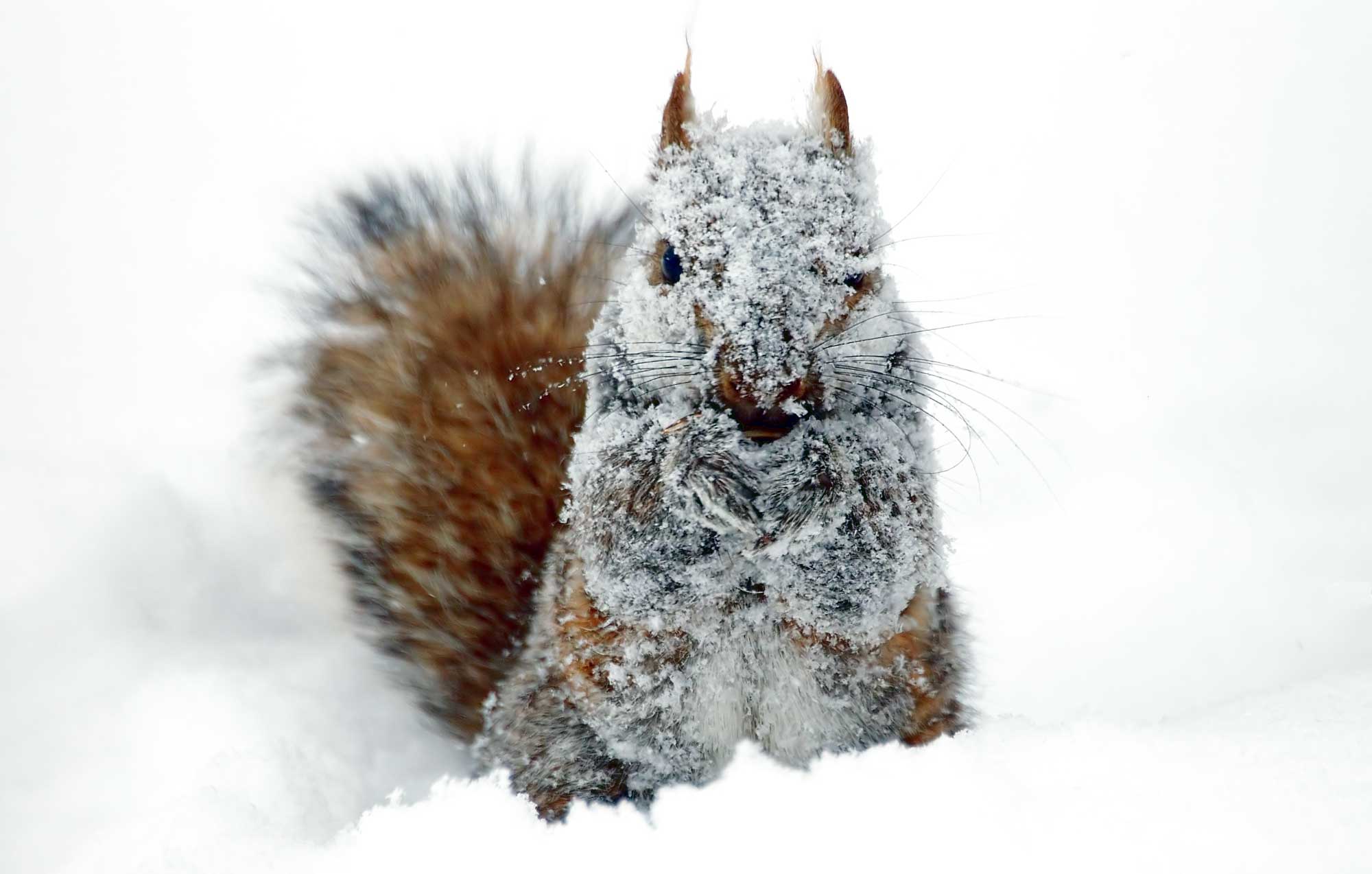How Do Animals Survive In The Winter
 (Photograph via Shutterstock)
(Photograph via Shutterstock)
Winter weather is unpredictable at best. Nosotros may go a few lucky streaks of unseasonable warmth, but it's often gloomy and commonly cold — sometimes miserably cold. Given the choice, most of the states cull to spend near of our time indoors. Animals, though, don't exactly accept a choice.
Wildlife have many different ways to survive winter. Some mammals, like groundhogs, "slumber" through it, hibernating during the coldest role of the year. Others, including many bird species, escape it birthday by migrating due south for the wintertime. But others only have to bargain with information technology. For these animals, of import adaptations allow them to survive in fifty-fifty the near frigid weather.
For the most role, the adaptations animals use depend on whether they are warm-blooded or common cold-blooded. Warm-blooded, or endothermic, animals, which includes mammals and birds, maintain a constant trunk temperature, and an disability to maintain that temperature can exist deadly. (Think of hypothermia, for example.) Nearly animals that migrate and hibernate are warm-blooded, but most birds and mammals don't hibernate or migrate. Instead, they have other mechanisms that protect against harsh wintertime conditions.
Some, such as chipmunks and squirrels, add an extra layer of fat to assistance insulate their bodies from the cold.
Others, like beavers and mice (and again, chipmunks and squirrels), shop food in the warmer months to ensure they take an aplenty supply during winter, according to the Michigan State University Extension. Many animals that live in cold climates have fur designed to insulate and protect them against extreme temperatures. Others, similar geese and other waterfowl, have vascular systems that let for what's called a concurrent heat exchange, allowing warm, oxygenated blood to flow to the extremities while libation, oxygenated blood passes nearby on its way back to the middle. This is why their anxiety don't freeze to the ice.
Cold-blooded, or ectothermic, animals, like reptiles, amphibians and fish, don't have to utilise the same blazon of adaptations as warm-blooded animals because they get their body heat from their environment and their body temperature fluctuates based on that. If the temperature is forty degrees Fahrenheit, a cold-blooded animal'southward temperature will gradually adjust to be xl degrees Fahrenheit. If the temperature were to rise or fall, then, too, would the fauna's torso temperature.
This ability to arrange to the temperature of their environment allows for some interesting winter survival stories, such as that of the wood frog, which is freeze-tolerant. That means their bodies freeze and thaw with the irresolute temperatures, National Geographic reports. In the wintertime, forest frogs accept shelter nether leaves and other plant matter on the ground. When temperatures autumn below freezing, their bodies freeze too, but chemicals in their bodies like urea and glucose protect their cells from condign damaged.
Wood frogs aren't the only animals that survive beingness frozen. Woolly bear caterpillars tin similarly freeze and thaw as wintertime temperatures ascent and autumn.
Painted turtle hatchlings must also be able to withstand freezing temperatures. These turtles hatch in late summer or early fall and so travel to a shallow nest in a nearby lake or steam, according to the American Institute of Biological Sciences. The hatchlings have thick skin and as well don't retain much water, both of which prevent freezing. Their blood is besides able to cool to a very low temperature, which further helps them survive subfreezing temperatures.
Of form, it can be as well cold even for some animals, especially our pets. The American Veterinarian Medical Association advises pet owners to go on their dogs and cats inside during below-freezing weather. Permit merely short trips outside to go to the bathroom. And fifty-fifty though they have fur coats, our pets can even so become frostbite or develop hypothermia. While some dogs, like huskies, are more tolerant of the cold because of their thick coats, they still should non be left out in the cold for extended periods when the conditions is below freezing.
_______________
Stay up-to-engagement on the happenings in Will County's forest preserves by subscribing to The Compass ,our weekly digital newsletter that provides subscribers with updates on Forest Preserve news, upcoming events, and other fun and useful information for the whole family. If you're but interested in programs, subscribe to Get Going, which outlines the must-do programs each week. Signing up for either newsletter is like shooting fish in a barrel and costless of charge.
Source: https://www.reconnectwithnature.org/news-events/the-buzz/how-animals-endure-worst-winter-weather#:~:text=Wild%20animals%20have%20many%20different,migrating%20south%20for%20the%20winter.
Posted by: robinscomagese.blogspot.com

0 Response to "How Do Animals Survive In The Winter"
Post a Comment